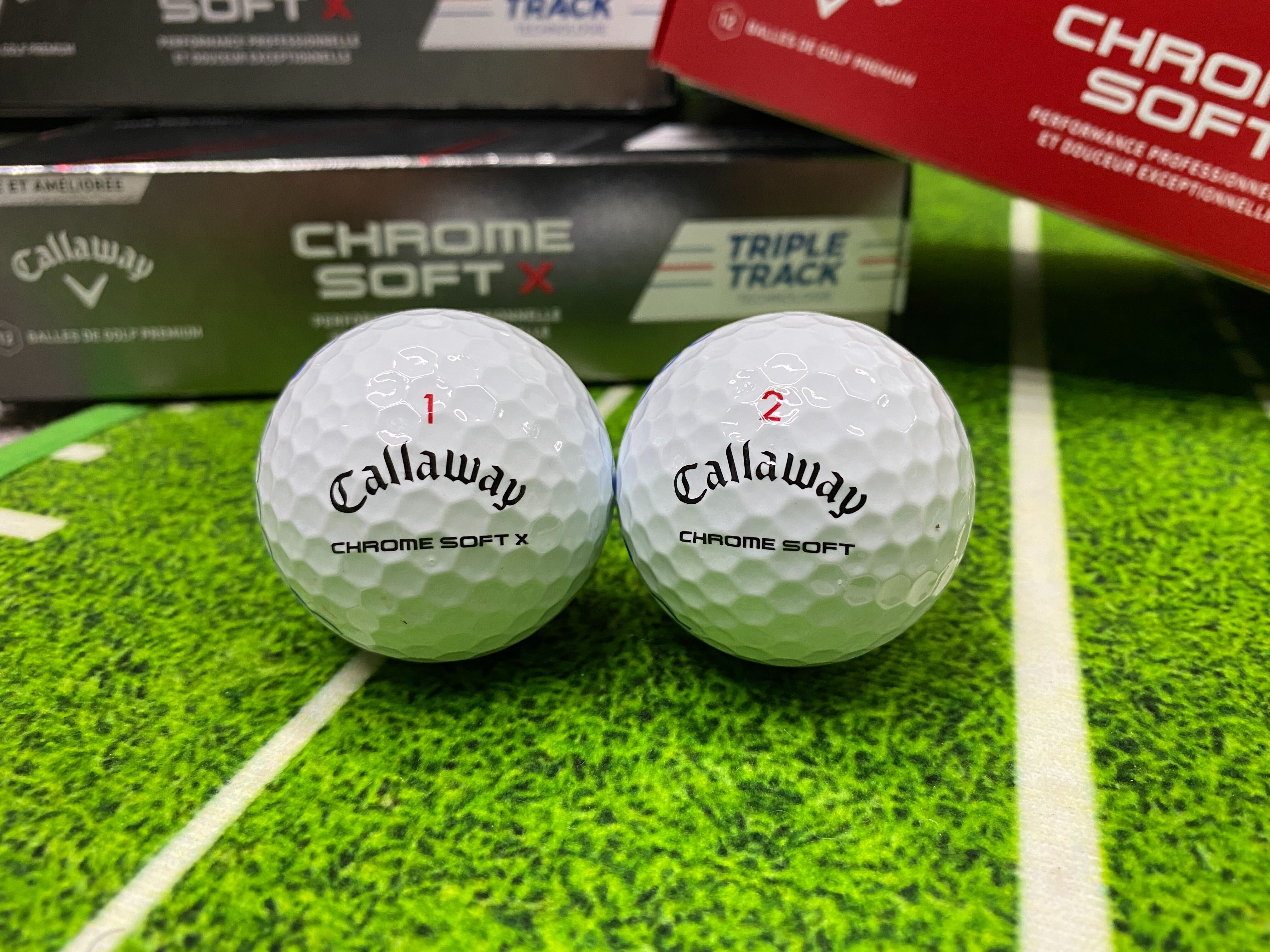
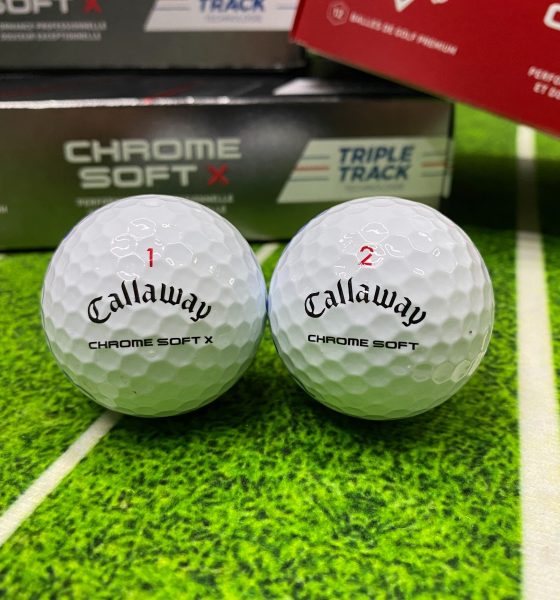
Equipment
Callaway Chrome Soft vs Chrome Soft X: GolfWRX staff test
Earlier this year, we covered the release of the new 2020 Callaway Chrome Soft and Chrome Soft X, and recently we took a look inside the newly upgraded Callaway golf ball plant in Chicopee, Massachusetts, where the balls are manufactured.
Now, it’s time to test the reengineered golf balls to see how they compare in various situations. For that, three members of the GolfWRX team—Brian Knudson, Johnny Wunder, and Ryan Barath—all focused on various parts of their game to give you both qualitative and quantitative data to help you figure out which one will work best for you.
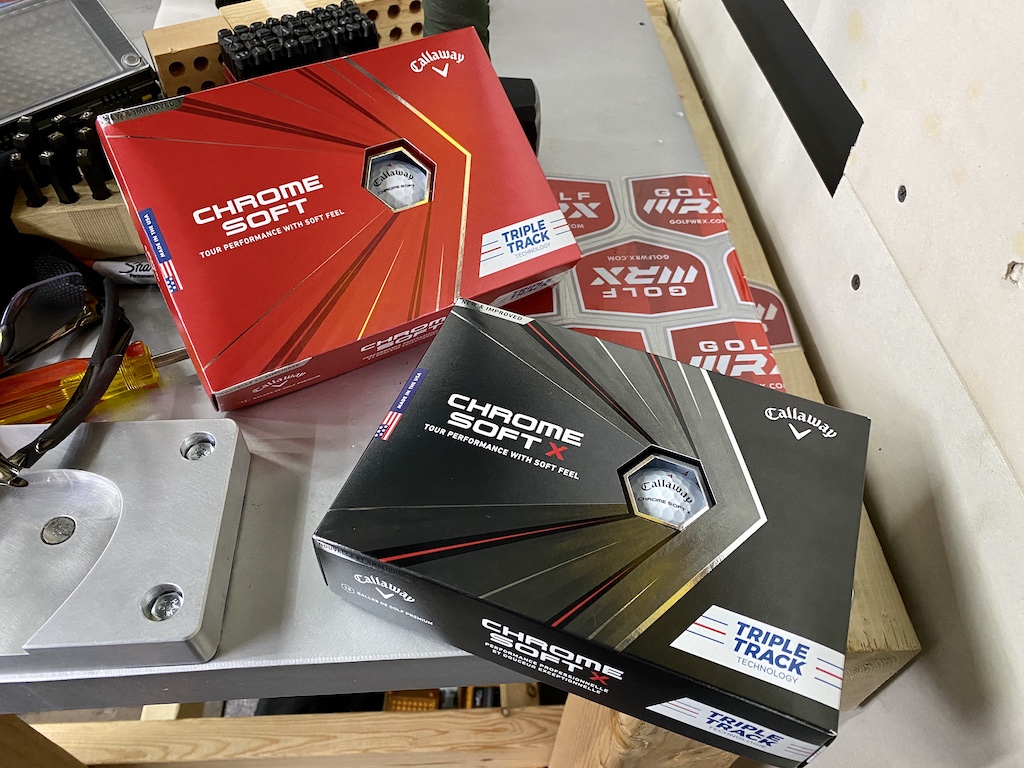
Ryan Barath (5 handicap): Short game and the 50-yard pitch
Short game
Let’s start with feel. For me, when it comes to choosing a ball, I’m a bit like Goldilocks in that I like a ball that is soft but not too soft and firm but not too firm—I really am looking for that perfect sweet spot, and for me, that is the Chrome Soft X. It is firm yet extremely responsive, and as I get closer to the green and as my swing speed on shorter shots decreases, it still feels soft and doesn’t get “clicky.” As soon as a ball gets clicky for me in the short game, I never feel as confident in hitting shots, even if I have numbers to prove it spin as much as other balls.
If you are looking for a ball that offers the softest feel of the two, then the standard Chrome Soft is going to be right up your alley.
The same goes for off the putter. I don’t generally use a putter with an insert, and as much as I love the soft feel of the standard Chrome Soft, I prefer the feel of the firmer Chrome Soft X. To me, a slightly firmer ball helps confirm the speed at which I hit a putt, and when a ball gets too soft, I struggle. Keeping that in mind I had no issues using either the Chrome Soft or the Chrome Soft X, and as an added bonus, both the balls come with the Callaway Triple Track alignment system to help with lining up putts.
Beyond focusing on the 50-yard shot, the one last thing I really pay attention to when hitting various short game shots in close proximity to the green is how the ball reacted on the first bounce and the consistency of the carry vs roll on chips and pitches. Let’s be real here for a moment: I would like to remind you I’m still just a 5 handicap golfer, so I miss shots and have inconsistencies in my game but still have serious expectations about the performance of my equipment.
So to continue, the one thing I enjoy about both the Chrome Soft and Chrome Soft X is how they never get unexpectedly “grabby” around the greens. What I mean by this is I felt I got a nice controlled rollout towards my targets and never had one quickly check-up when I didn’t want it to. On the higher lob shots, I got plenty of grab from both balls as you would expect, and on the chip shots, I once again preferred the X vs. the standard Chrome soft for the slightly firmer feel.
50-yard pitch testing protocol
- My test was conducted outside at a dedicated short game area off real grass hitting into a real green.
- I used my 54-degree wedge, and both cleaned and dried the grooves between each and every shot.
- The measuring device was a FlightScope XI+
- To ensure extra accuracy based on the shorter distance, each ball was cleaned and also affixed with a reflective sticker (generally used for indoor testing) to ensure the accuracy of the data.
- All data was normalized and outliers were removed (do you know how many outliers a 5 handicap has? Quite a few…)

This to me is where my preferred Chrome Soft X really stood out. From the numbers, you can see that the X launched slightly lower and with extra spin—this is the ideal scenario for hitting consistent, controlled quickly stopping pitch shots.
The numbers actually show that both balls performed quite close to each other, but when small details matter, it’s going to come down to the shots you like to hit and the feel you prefer with a ball.
Johnny Wunder (3 handicap): Indoor launch monitor testing (driver, 7-iron, PW)
I was very curious to see how this would go down. I’ve tried Callaway balls in the past, and if I’m honest, they were always long but never outperformed my gamer overall. In other words, they were great off the tee and just OK everywhere else.
It’s a new day and definitely a new golf ball.
I have been playing the same ball for 20-plus years. And during that time I have tried balls that were longer, spun more, spun less, etc. The thing is when it comes to the ball for me, I’m a very hard switcher and comfort carries a TON of value for me, even in the face of serious performance data. This test was to get to know the Callaway Chrome Soft and Chrome Soft X a bit better.
Like any mainstream ball on the market, you hear a ton of good and always some of the bad. It’s always going to come down to your personal experience and what you find.
What I found was a ball that was long, consistent, and most surprisingly, quite forgiving.
I conducted my test indoors on a Foresight GC Quad normalized. Three balls were tested Chrome Soft, Chrome Soft X, and my longtime gamer the Titleist ProV1.
- 10 shots w/ each ball and each club.
- 90 shots total
What did I learn?
I was pleasantly surprised by both of these balls across the board, especially how they performed with irons. I’m a player that tends to add a bit of dynamic loft at impact with a center thin miss around half the time. Over the past year, I have found irons to maximize those misses, PXG Gen 3 T, TaylorMade 770, and the Titleist T100. Until now, I had not found a golf ball that enhanced that miss, Chrome Soft X was outstanding in that respect. Not only did the X launch, it still retained some spin which is something I want right now.
Apples to apples, both of these balls performed very well across the bag. If I could change anything,g it would be the sound as compared to my gamer (it’s a bit clicky). Would love to get them around the greens and see how they do—if Phil uses them they gotta shine in that arena.
If I had to pick between the two, I’d lean towards the Chrome Soft X. Yes, the numbers were best overall, but like all good golf balls, it’s in the nuance that all the magic happens. The golf ball needs to be a trusted friend and not a drama queen, I liked that the X stayed with me when I wasn’t my best, isn’t that what good friends do?
Will I ever switch outta my gamer? Who knows. I’m pretty comfy with my Pro V1. I know it inside and out. However, these Callaway balls perform at a very high level and I’d say its almost essential that you dig in if you are looking for a new ball.
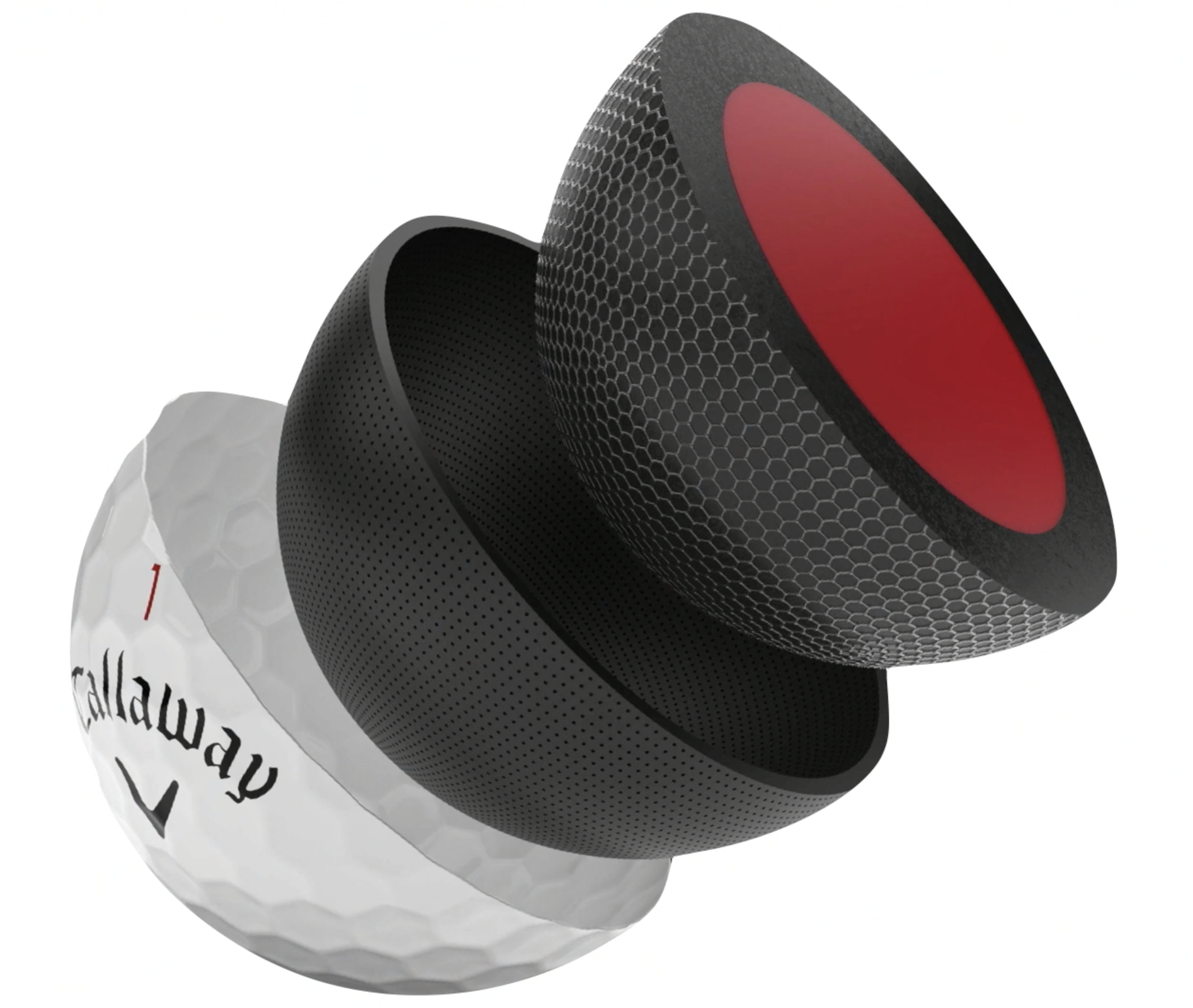
Callaway Chrome Soft
Brian Knudson (8 handicap): On-course test
Callaway Chrome Soft vs. Chrome Soft X
Driver
I got a slightly higher ball flight out of Chrome Soft X that gave it a slight edge in distance. Not really a big difference; on most shots, it was only a couple of yards. I was a little surprised at that result as I figured the lower-spinning Chrome Soft would take the win there. I am not a high spin player at the top end of my bag, so I think the addition of a little spin and trajectory helped in the distance category. Chrome Soft was easily the straighter ball off the tee with every club. Driver, fairway, or iron, the Chrome Soft just wanted to go straight and far. I typically play a draw and Chrome Soft can still be worked, but it moved about 20-30% percent less than Chrome Soft X. Feel and sound on both are great, and it is harder to tell the difference with the longer clubs.
Iron game
So many focus on driver distance that I think a lot gets lost with the way the ball performs with their irons. Iron shots with Chrome Soft again came out a little lower than with Chrome Soft X—again giving the distance advantage slightly to X. Feel on both was great, soft yet still responsive, but you could more easily tell that Chrome Soft was softer. Long iron approaches seemed to hit and release the same distance and it was easily predictable with both balls. With the short irons, Chrome Soft’s distance was more predictable with its one-hop and done performance. Chrome Soft X took a little more thinking to get dialed in because if you caught a slope the extra spin would cause the ball to come back a few feet. That extra spin with the short irons gives highly skilled players the ability to get to some tight pins that they might not be able to attack with Chrome Soft. Chrome Soft again was a straighter ball, while still having the ability to hit draws and fades, it just didn’t move as much as CSX. Flighting shots was easy and predictable with either ball, but CSX still did fly a touch higher than CS. Overall, I loved the performance of the CSX and after getting used to the decreased amount of release it was a great ball.
Wedges
This is where I love to test two golf balls against each other because I feel like there is no hiding with the short game. I figured it would be a landslide victory for CS X, but it wasn’t. Chrome Soft can really hold its own around the green, offering really consistent and predictable spin. When struck well off fairway lies, you were rewarded with a ball that checked up exactly as you thought it would. With full and 3/4 shots Chrome Soft came out a little flatter but again still checked up on the green. Chrome Soft X launched a little higher and again would check up a little faster than it’s brother. Chrome Soft X also had a slightly firmer feel that I actually preferred. Out of the rough or bunker Chrome Soft X was able to show a little more of that spin and I noticed it checked a bit harder than perfect lies compared to Chrome Soft.
Putting
Both the Chrome Soft and the Chrome Soft X that I played had Triple Track alignment on them, so really the difference came down to feel. With my Odyssey Triple Track #7 putter, Chrome Soft for sure had the softer feel and less click at impact when putting. I actually liked the slightly firmer Chrome Soft X because I thought it gave me a little more feedback at impact on how I struck the putt. Distance control with either ball is spot on and consistent. The Triple Track alignment was great for me on putts around 10ft and under, letting me only concern myself with speed. On longer lag putts, I found myself overthinking the alignment and sometimes missing part of the read because of that. After a while I would only use the Triple Track on puts around 10ft, using the blank side on those longer lag putts.
Overall
Both the Chrome Soft and Chrome Soft X are great performing golf balls. For me, Chrome Soft X ended up being the ball that worked best with my game. It had a slightly higher apex and spin that gave me a little more distance as well as control around the green. And print that Triple Track alignment aid on it to help me make more 10 footers!
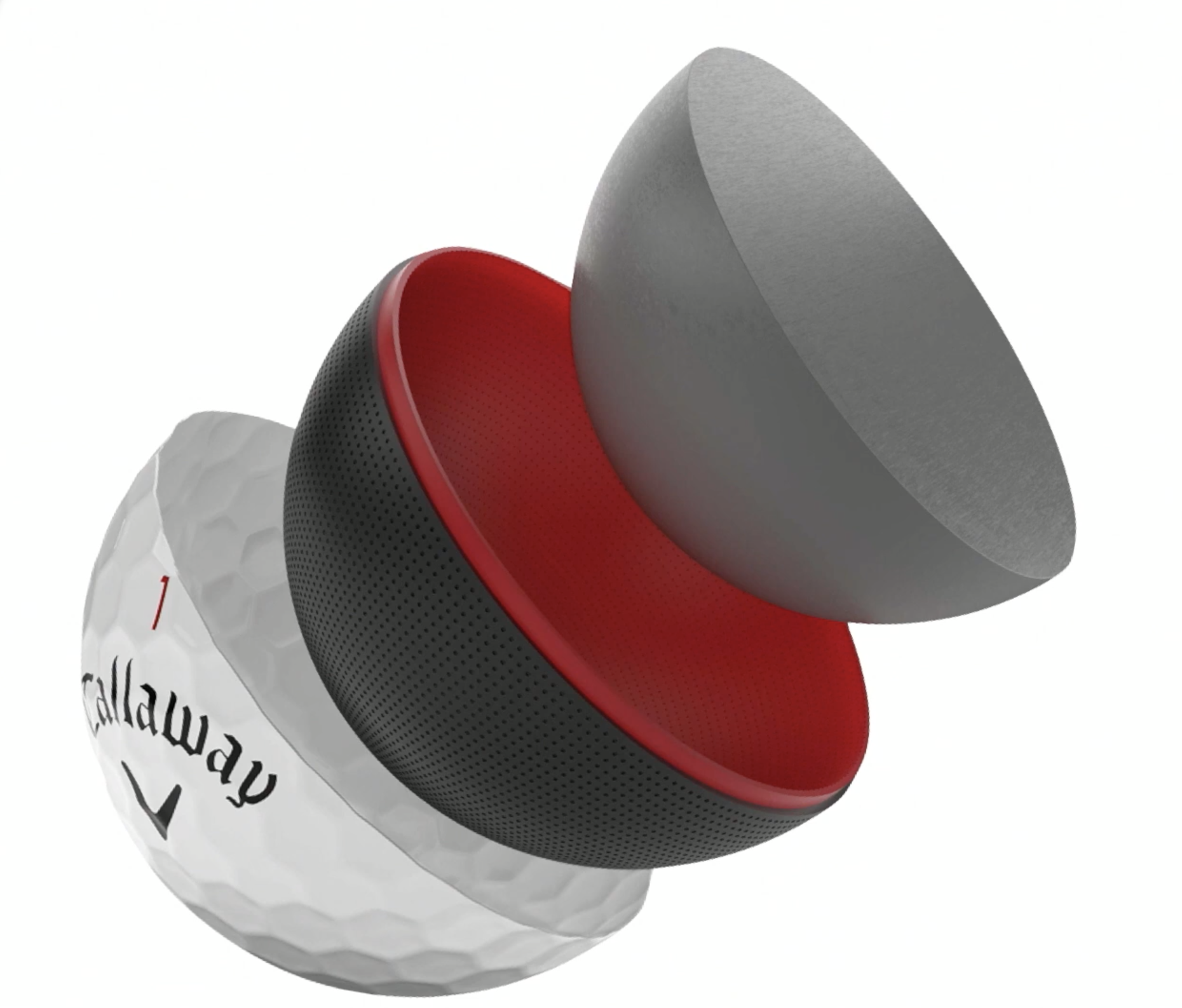
Callaway Chrome Soft X
Final takes on Chrome Soft and Chrome Soft X?
WRX staff highly recommend you give both balls a spin (no pun intended) to see what works for you. The golf ball market is extremely competitive, so if at all possible, try a bunch and see what you connect to.
Just like with clubs and shafts, we see our role as helping you understand products and compile your lineups for testing and fitting. Chrome Soft series golf balls check off all the boxes and should absolutely be on all golfers’ shortlists.
- LIKE122
- LEGIT18
- WOW4
- LOL8
- IDHT2
- FLOP3
- OB2
- SHANK6
Whats in the Bag
Richy Werenski WITB 2024 (May)
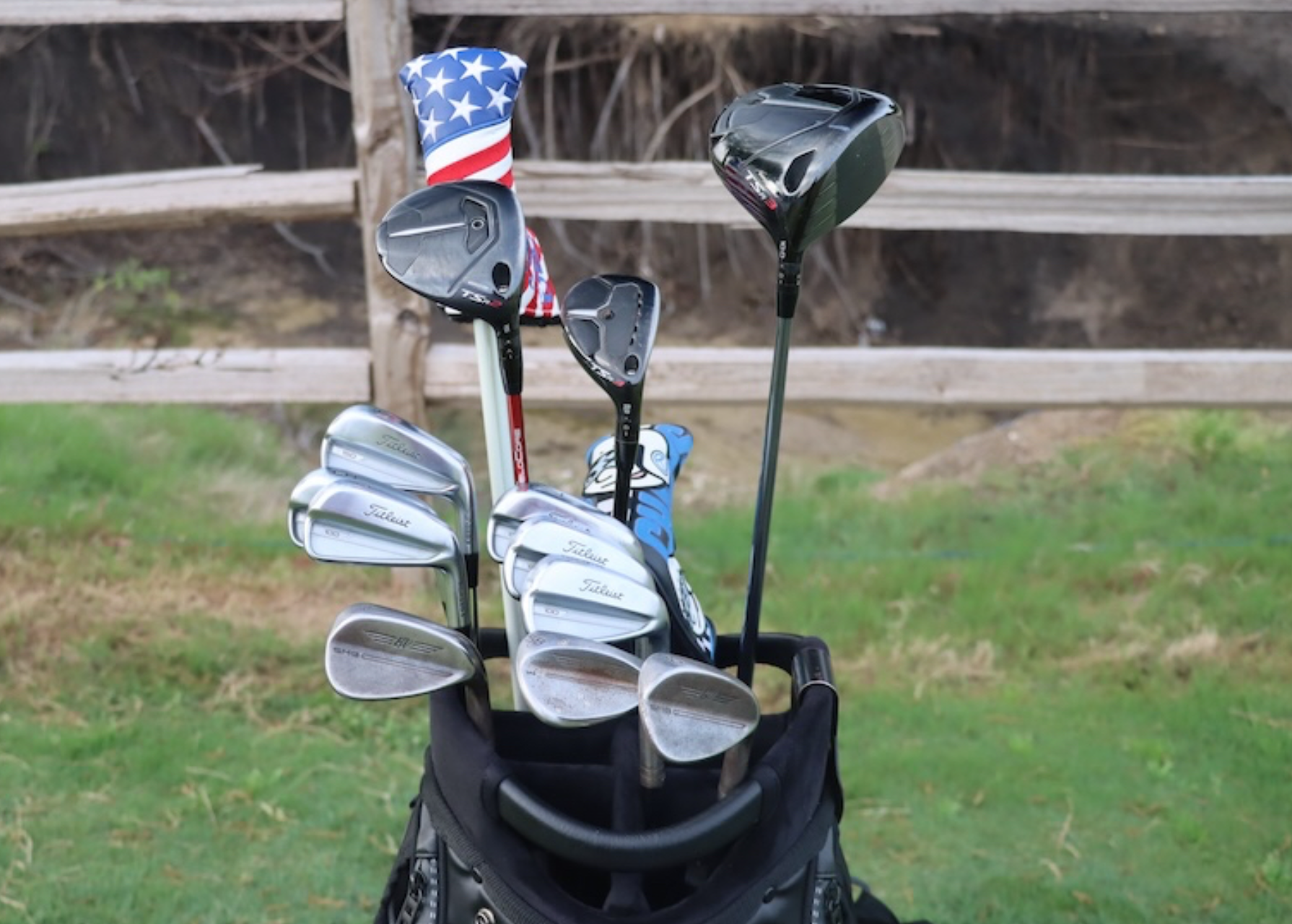
- Richy Werenski what’s in the bag accurate as of the CJ Cup Houston Open.
Driver: Titleist TSR3 (10 degrees, D1 SureFit setting)
Shaft: Mitsubishi Diamana PD 60 TX
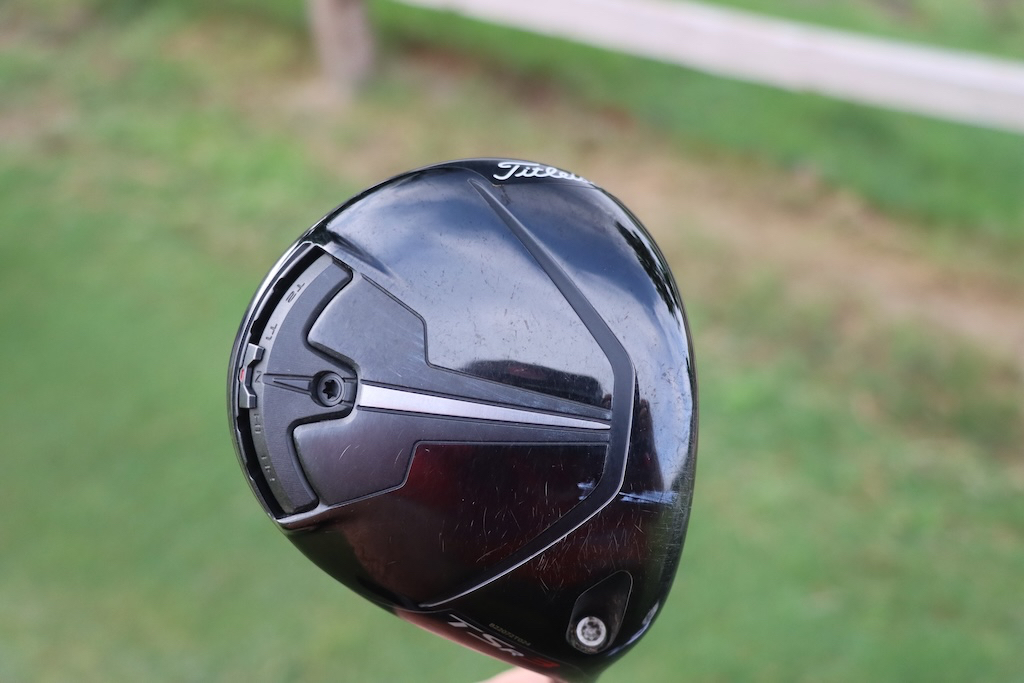
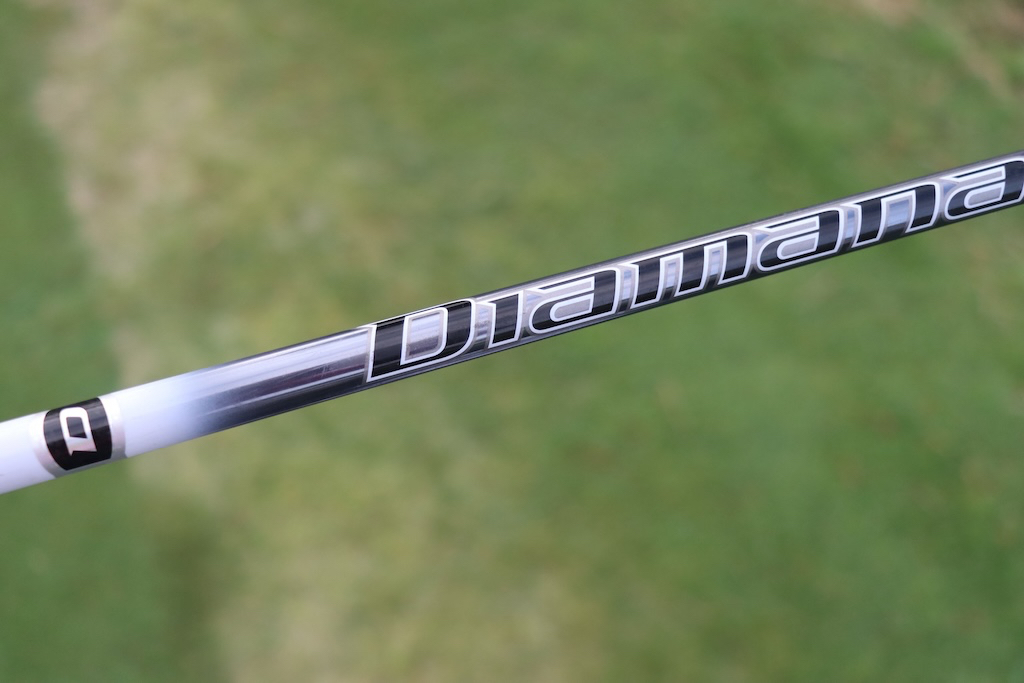
3-wood: Titleist TSR2 (15 degrees, A1 SureFit setting)
Shaft: Fujikura Ventus Red 8 X
Hybrid: Titleist TSR3 (19 degrees, D1 SureFit setting)
Shaft: Mitsubishi Tensei CK Pro White Hybrid 90 TX
Irons: Titleist T100 (4-9)
Shafts: Nippon N.S. Pro Modus3 Tour 105 S
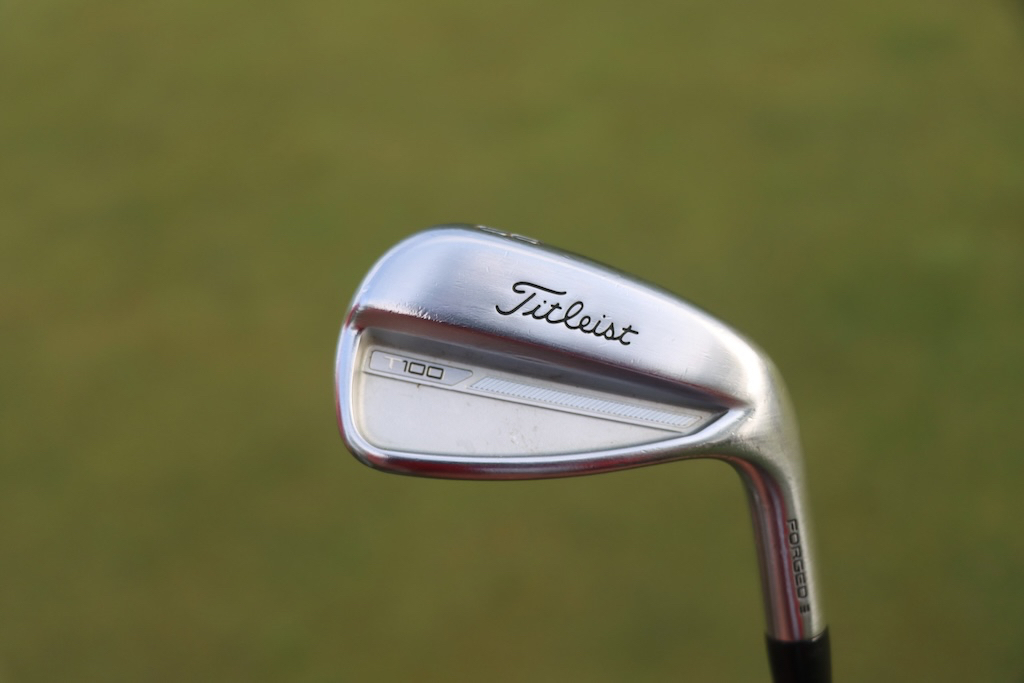
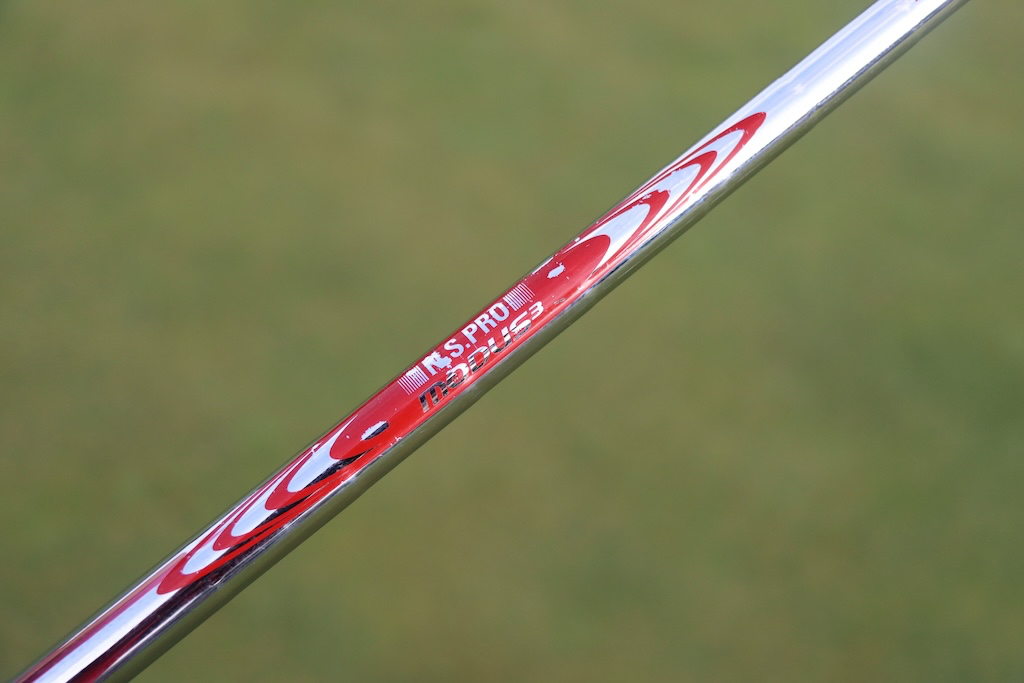
Wedges: Titleist Vokey Design SM9 (46-10F, 50-12F), Titleist Vokey Design WedgeWorks Proto (54-M, 58-L @60)
Shafts: True Temper Dynamic Gold Tour Issue X100 Onyx (46-50), True Temper Dynamic Gold Tour Issue S400 Onyx (54-60)
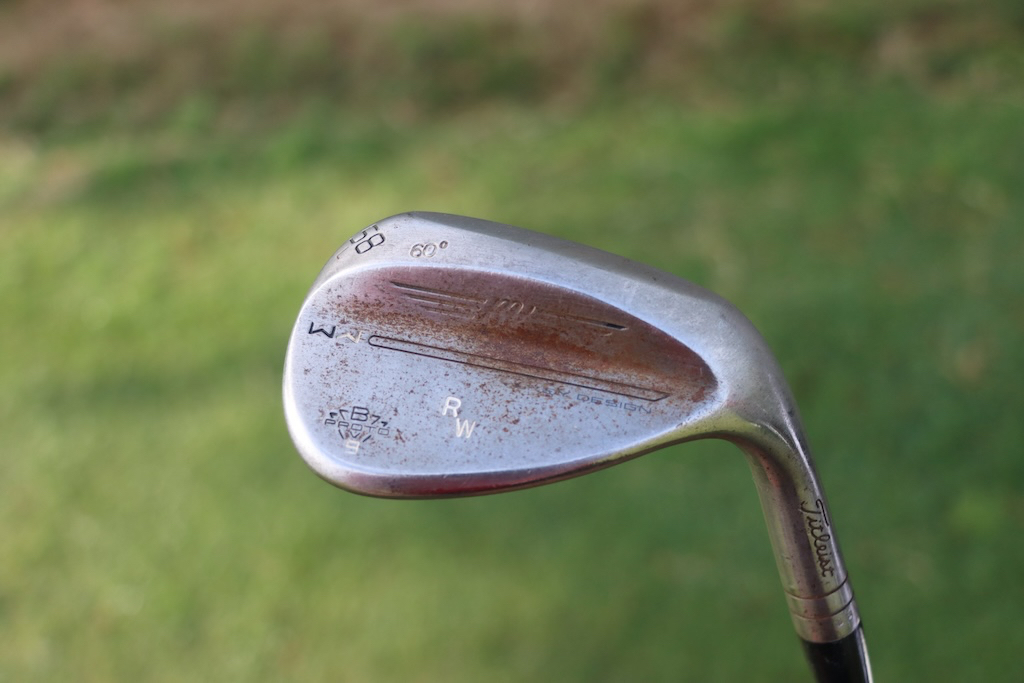
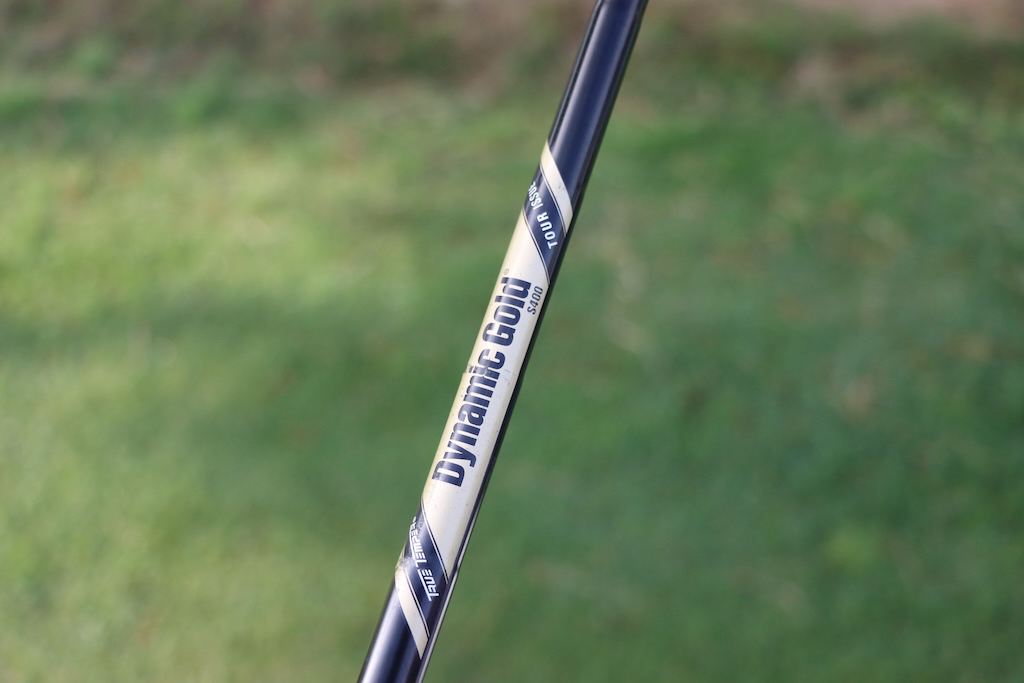
Putter: Scotty Cameron prototype
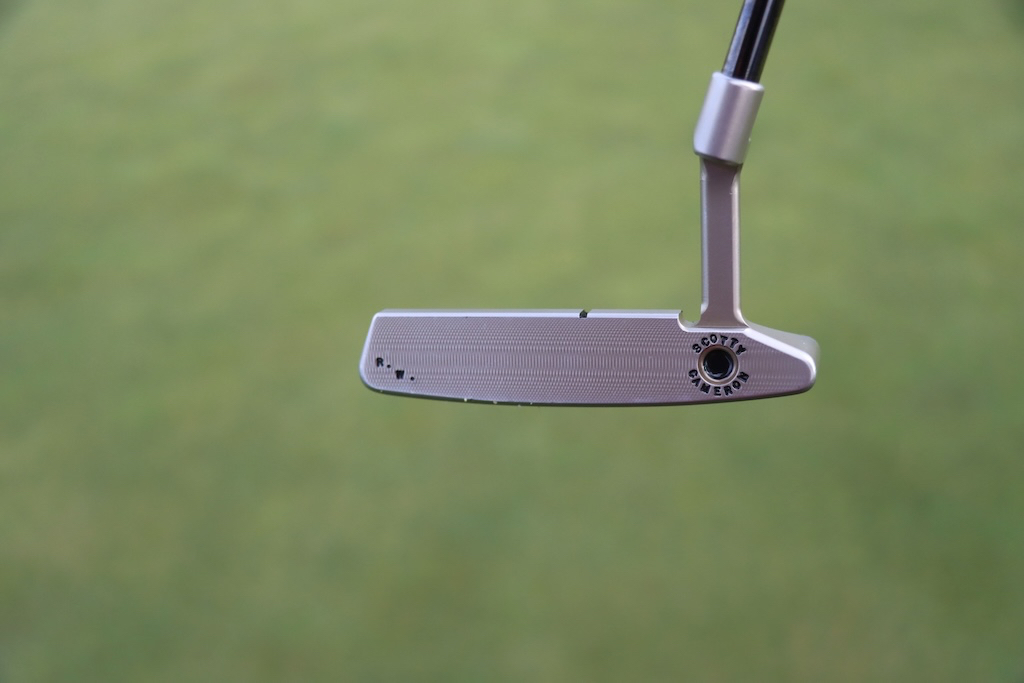
Ball: Titleist Pro V1x Left Dash
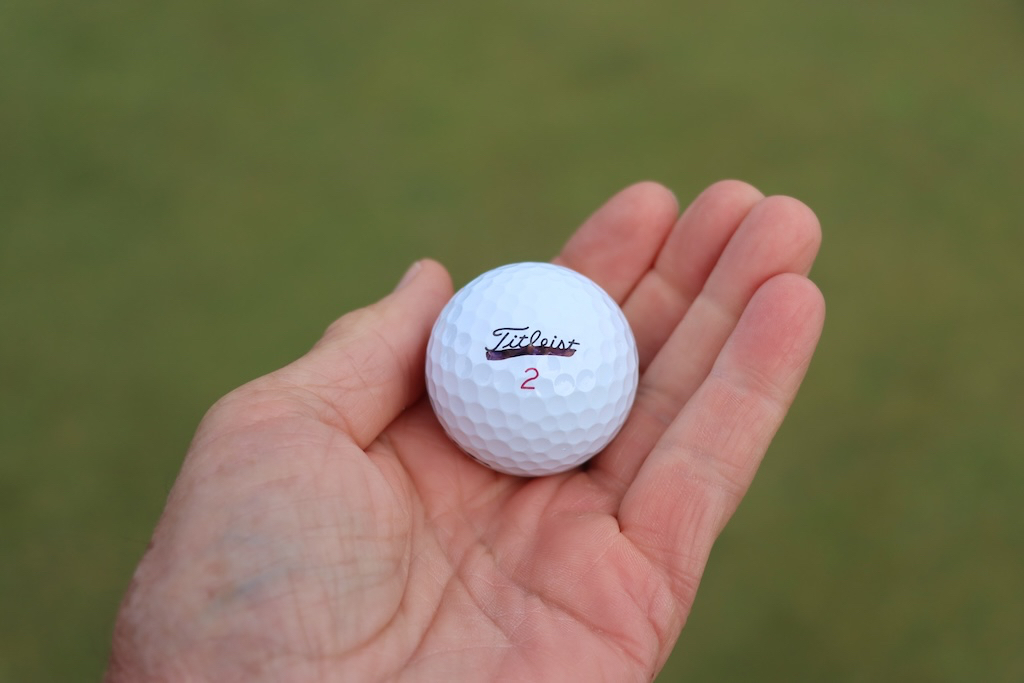
Grips: Golf Pride ZGrip Cord
Check out more in-hand photos of Richy Werenski’s clubs in the forums.
- LIKE1
- LEGIT0
- WOW0
- LOL0
- IDHT0
- FLOP0
- OB0
- SHANK0
Equipment
Adam Scott testing green “Masters Use Only” putter + 6 interesting equipment photos from the 2024 CJ Cup Byron Nelson
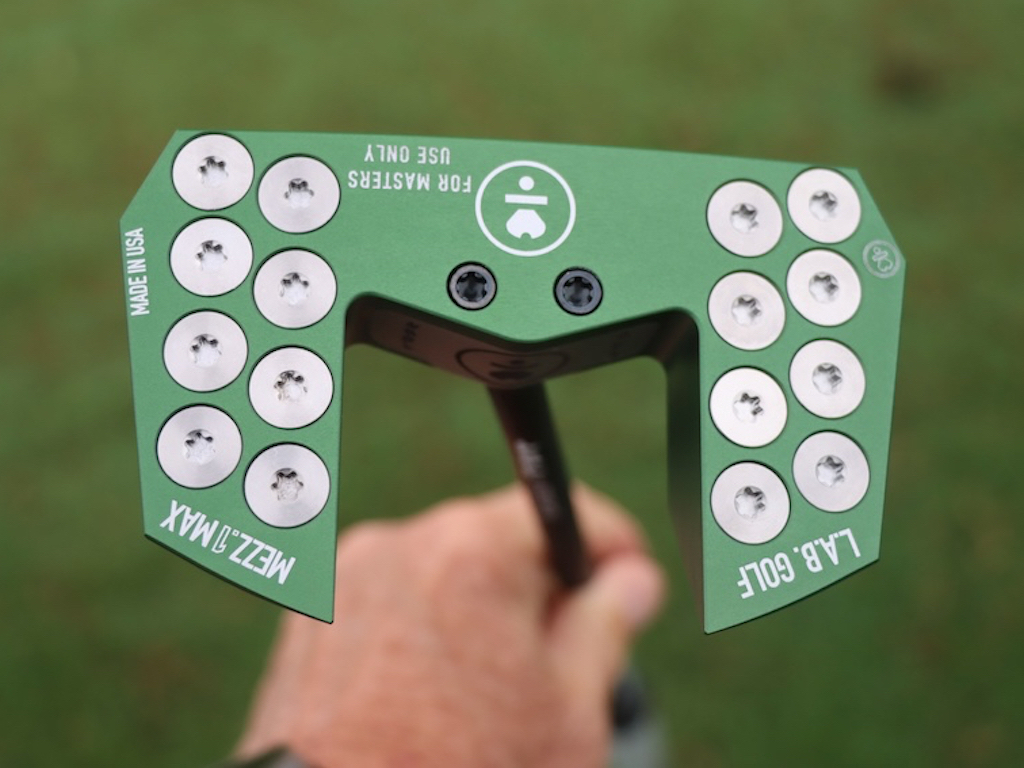
Welcome to the 2024 CJ Cup Byron Nelson event at TPC Craig Ranch in McKinney, Texas, which, for your geographical reference, is about 25 minutes from Dallas.
In early-week equipment news, we saw some interesting putter testing from Adam Scott, a Maxfli golf ball signing on the PGA Tour, a 16-year-old’s WITB, a PGA Tour player using another PGA Tour player’s backup putter, and Jordan Spieth weighed in on why he recently switched out just his 7-iron (and then made a hole-in-one with it).
With so much to report and so little time to waste on the intro, let’s get right into this week’s equipment rundown from the CJ Cup Byron Nelson.
See all of our photo galleries from the week here
Adam Scott’s new L.A.B. putters
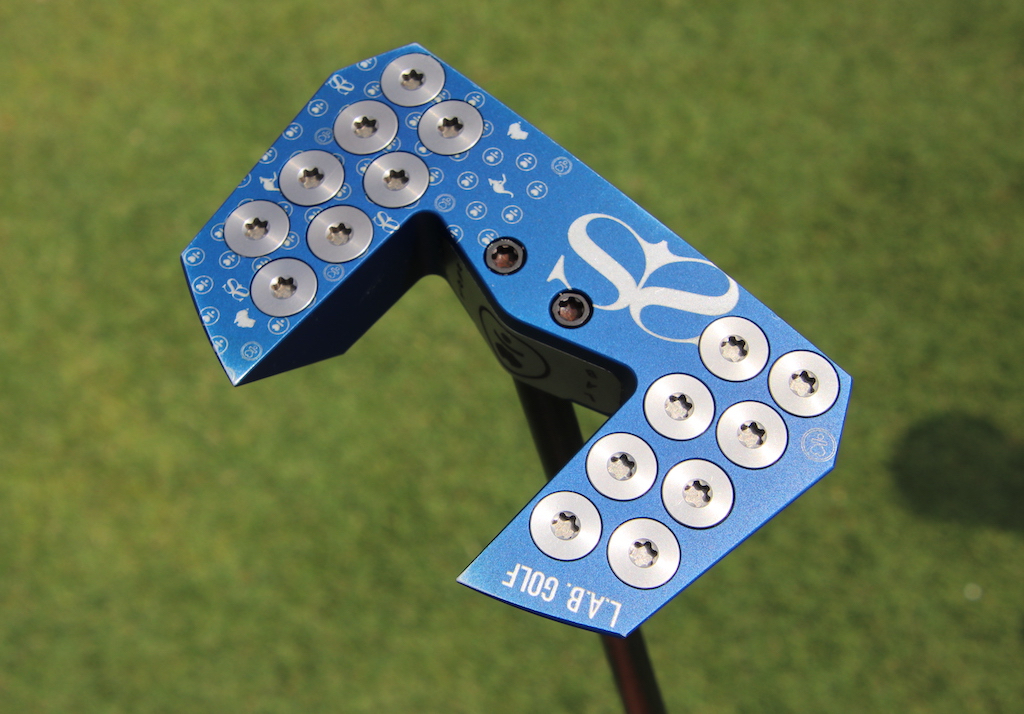
Before we get into a couple of the new prototypes Scott has been testing, above is a photo of the L.A.B. Golf Mezz.1 Max prototype putter that he’s been using, and will likely continue to use this week in Texas.
That being said, following the Masters, Scott was looking to try a couple putters with a slightly lighter weight to help with his feel on fast greens.
One of the new prototypes we spotted on Tuesday was a L.A.B. Golf DF3 “Proto 2.1”, custom-built with Scott’s preferred blue colorway, and an Australia-inspired Kangaroo laser engraving…
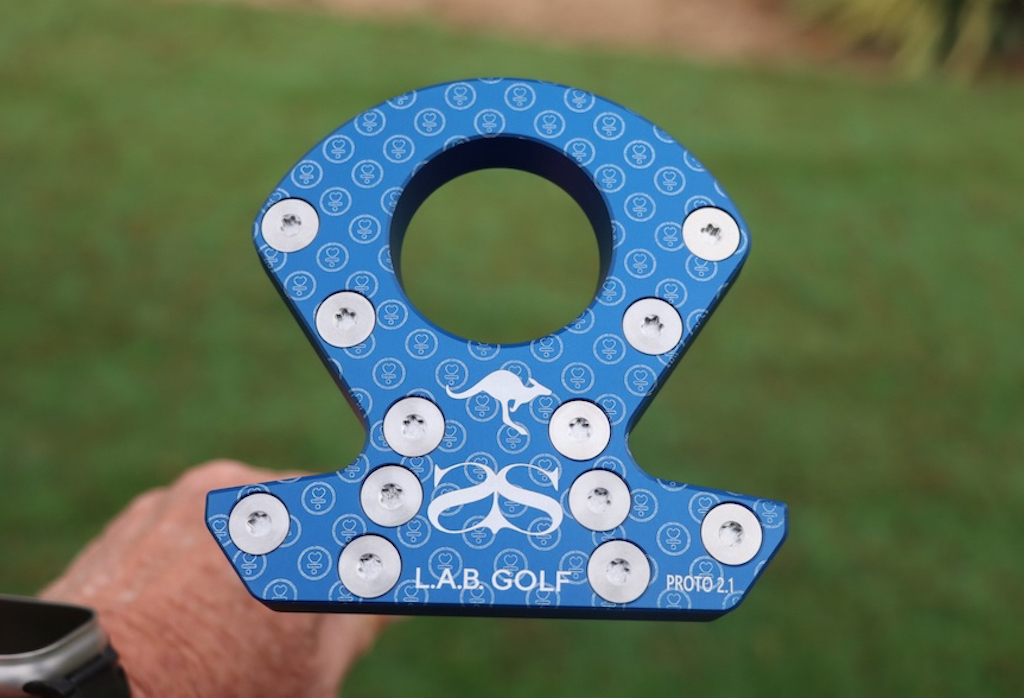
We also spotted him with a green-colored “For Masters Use Only” Mezz.1 Max prototype…

While it’s unlikely Scott will make a switch this week, it’s certainly something to keep an eye on going forward, especially on courses with faster greens.
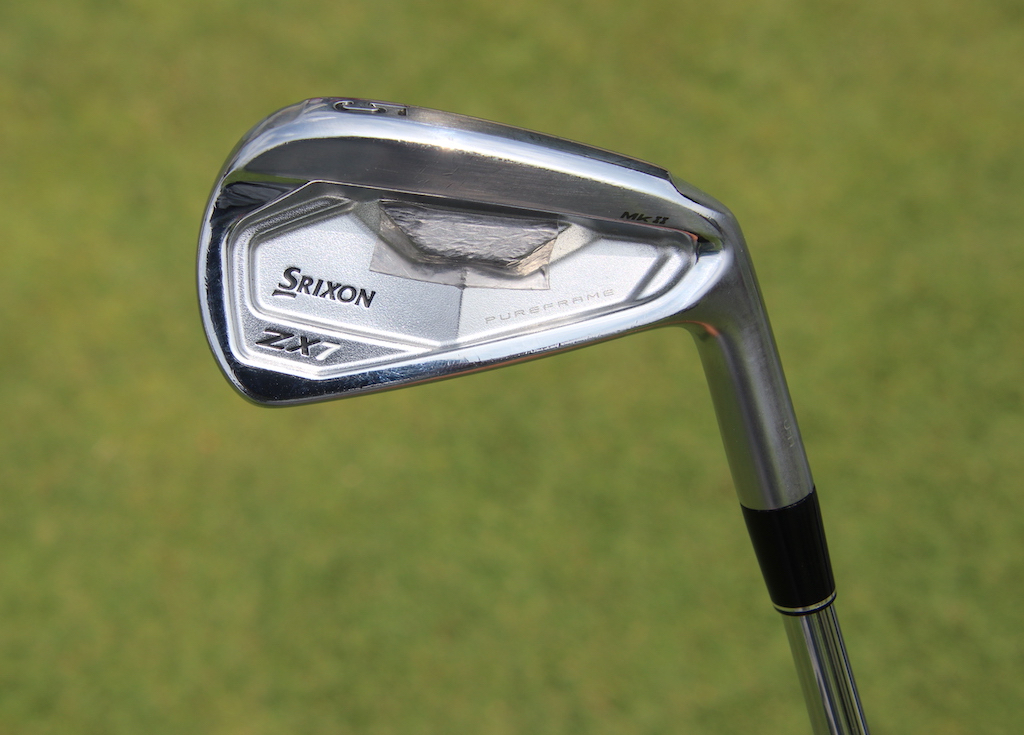
We also got a peek into Scott’s full WITB this week, which consists of a super-mixed set of Srixon irons, including a ZX Utility 3-iron, a ZX-5 MkII 4-iron, ZX-7 MkII mid-irons (5-7) and Z Forged II short irons (8-9).
See Scott’s full WITB from the CJ Cup here
An update on Daniel Berger’s Odyssey Jailbird
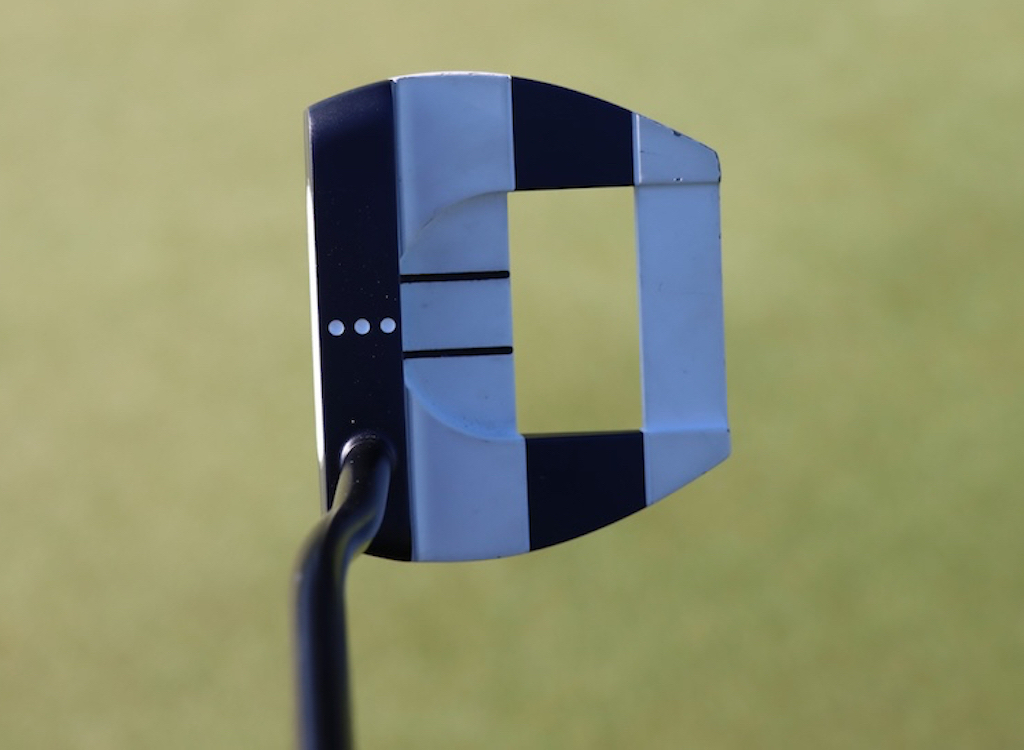
Last week in New Orleans, we highlighted Daniel Berger’s Ai-One Jailbird Mini putter because of its unique sightlines.
Well, we have an update.
According to Callaway Tour Manager Joe Toulon, who spoke with GolfWRX.com this week, Berger’s Jailbird Mini is actually from fellow Tour player Tom Kim’s stash. Kim is a prolific putter tester, and the exact putter Berger is currently using was actually originally made for and tested by Kim. The putter didn’t make it into Kim’s starting lineup, however, so he gave the putter back to Odyssey, and it eventually made it’s way onto Berger’s gamer roster.
Jordan Spieth’s new 7-iron
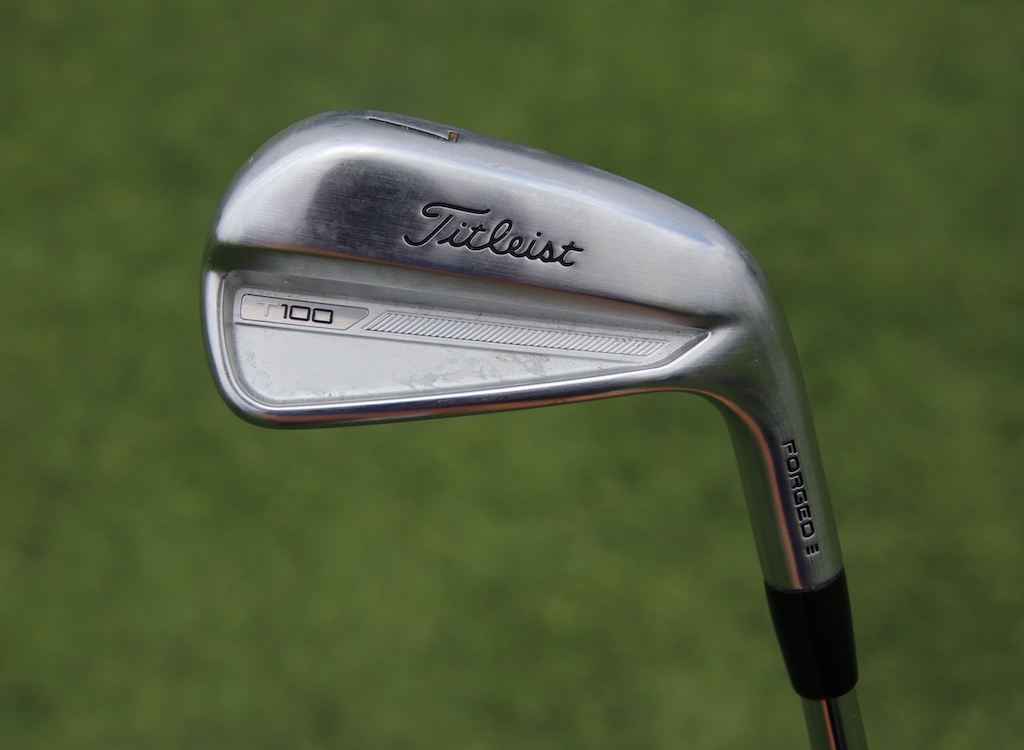
As the story goes, Jordan Spieth changed out his Titleist T100 7-iron on Wednesday before the 2024 Valero Texas Open, and then on Thursday, he used the 7-iron to make a hole-in-one from 199 yards on the 16th hole.
Good timing on that switch, Jordan.
On Tuesday at the 2024 CJ Cup Byron Nelson, GoflWRX.com caught up with Spieth to get the full story on why he switched just the 7-iron.
Our full story is over on PGATOUR.com’s Equipment Report, but here’s a snippet of what Spieth had to say:
“I hit my 7-iron a lot, especially on my own. The spin rates, relative to my 6-iron and my 8-iron, were lower, so it was going too far. I was trying to figure out why, if it was something in the makeup of the iron. I got the lies and the lofts checked, and everything was fine. So finally I was like, ‘Can I just get a new one and see if it fixes it?’
“Maybe there was one other time throughout my career where I changed just one iron, so it’s very unusual. I think it’s just because the grooves were worn down from hitting it too much.”
Ben Griffin signs with Maxfli to play the golf ball
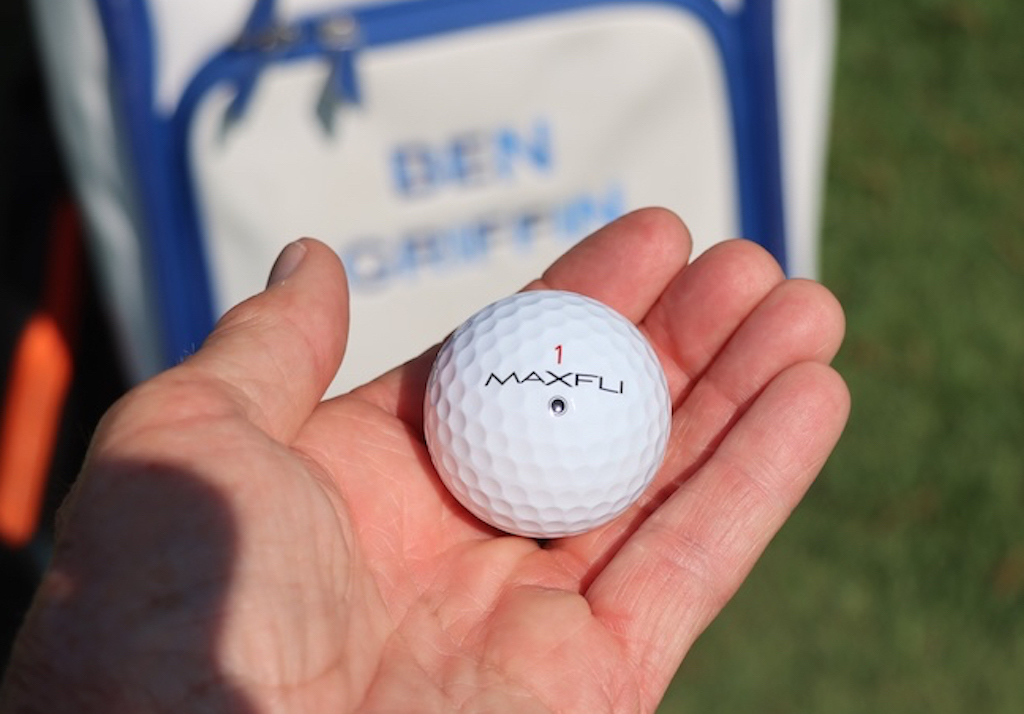
At the beginning of the year, LPGA Tour star Lexi Thompson signed a deal with Maxfli to play the company’s golf ball, and now, Griffin has officially joined team Maxfli, as well, thus expanding the company’s Tour presence.
GolfWRX.com caught up with Griffin on Wednesday in Texas for a video interview about his new golf ball of choice, and how he marks it…
View this post on Instagram
A 16-year-old is playing on the PGA Tour this week, using a 2-iron!
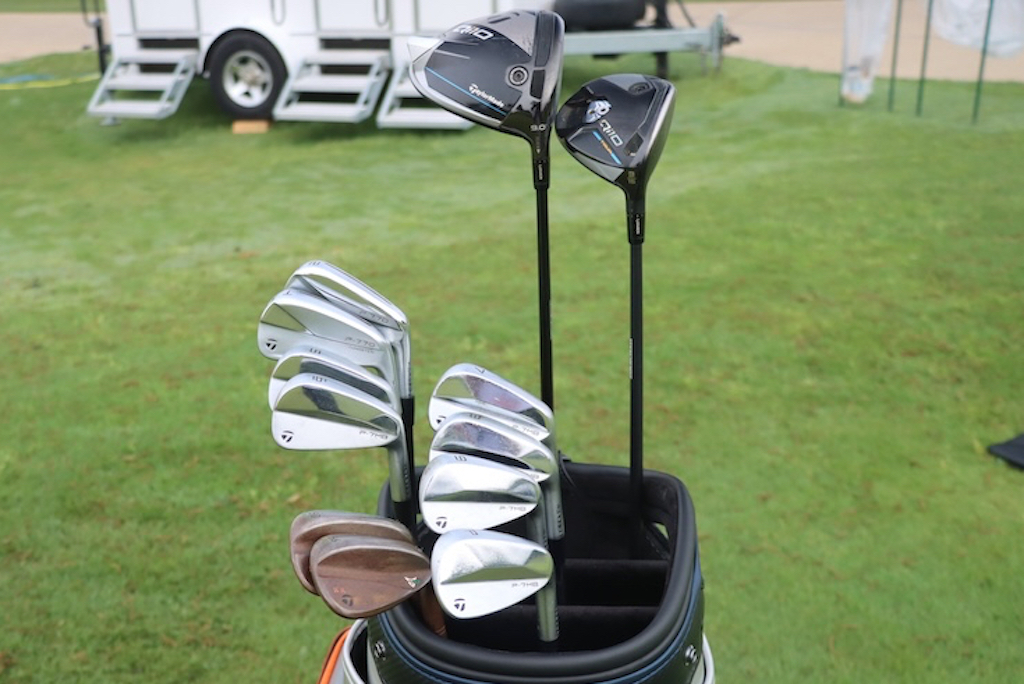
Amateur golfer Kris Kim, at just 16 years of age, is making his PGA Tour debut this week after receiving a sponsors exemption into the event. In 2023, Kim won both the R&A Boys’ Amateur Championship and the European Boys’ International Championship.
On Tuesday in Texas, we got a look into Kim’s bag, which revealed that he’s currently playing a TaylorMade P-770 2-iron, and a bag full of TaylorMade clubs.
Check out Kim’s full WITB here
A smart golf ball stamping
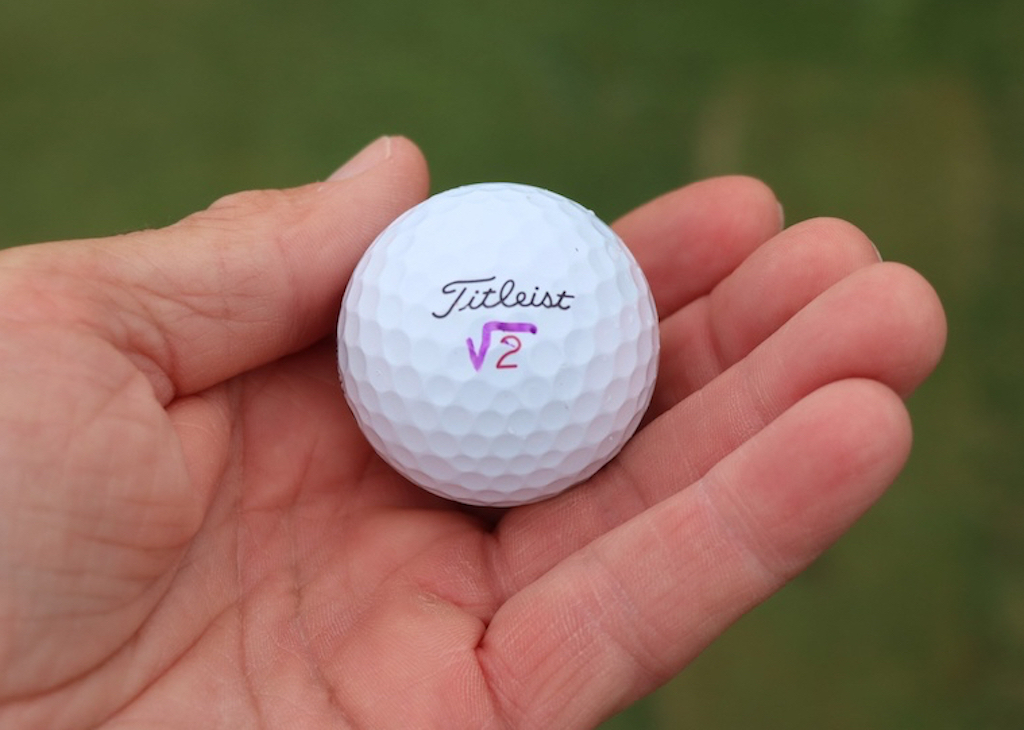
I’m not going to sit here and pretend to be a big math guy, because I’m not. However, I do recognize David Nyfjall’s purple ball marking as a square root symbol.
While I don’t know the particular significance of the square root symbol for Nyfjall, I do know you have to be fairly intelligent to even consider using a marking like that. Pretty cool stuff from the Northwestern alum, and 2023 Byron Nelson Award winner.
And, with that, we say goodbye to Texas and TPC Craig Ranch. We’ll see you next week at the Wells Fargo Championship in Charlotte for more insider equipment news and storylines.
For now, don’t forget to check out all of our photos from the 2024 CJ Cup Byron Nelson
- LIKE2
- LEGIT0
- WOW0
- LOL0
- IDHT0
- FLOP0
- OB0
- SHANK0
Whats in the Bag
Wesley Bryan WITB 2024 (May)
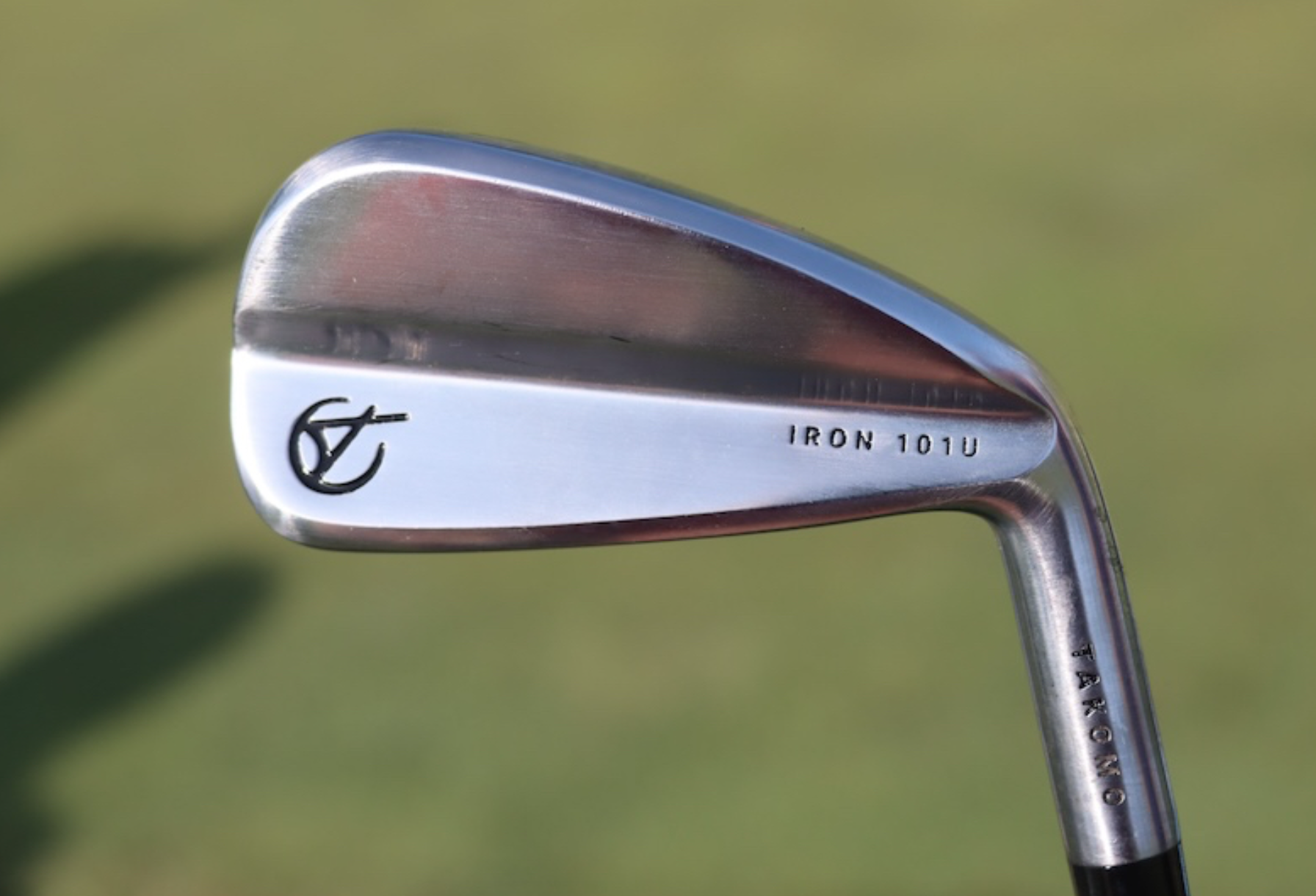
- Wesley Bryan what’s in the bag accurate as of the CJ Cup Byron Nelson.
Driver: Callaway Paradym Ai Smoke Triple Diamond Max (9 degrees @10)
Shaft: Mitsubishi Diamana GT 50 TX
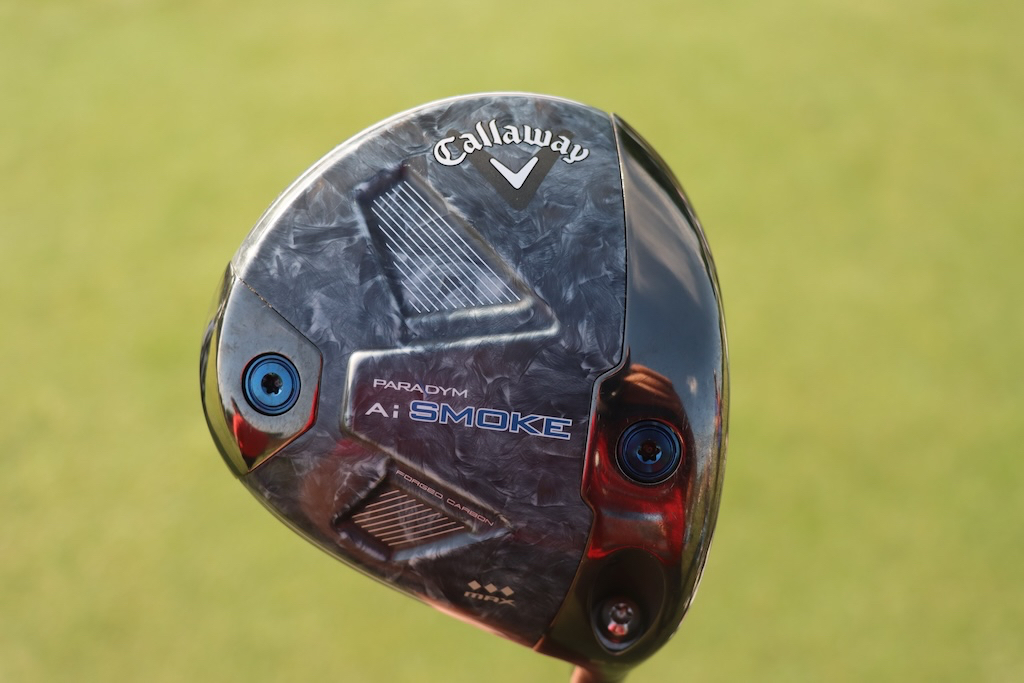
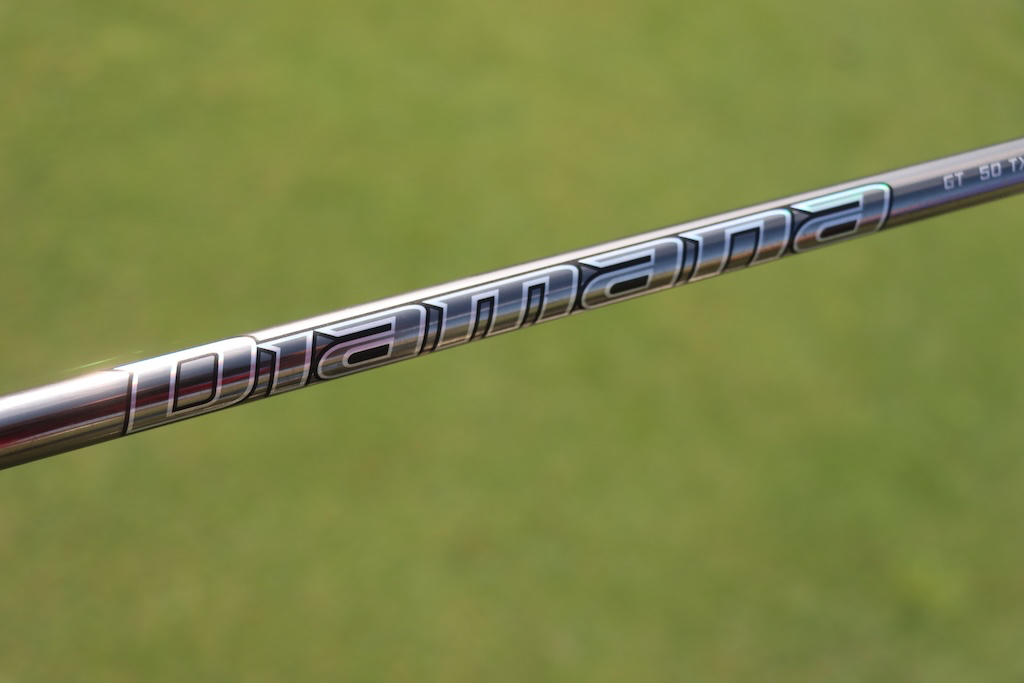
3-wood: TaylorMade Stealth Plus (15 degrees)
Shaft: Mitsubishi Diamana GT 60 X
Hybrid: TaylorMade Stealth 2 Plus Rescue (19.5 degrees)
Shaft: Fujikura Ventus HB Blue 8 X
Irons: Titleist T200 (4), Takomo 101U (4), Takomo 101T (5), Takomo 301 CB (6-9)
Shafts: True Temper Dynamic Gold Tour Issue X100
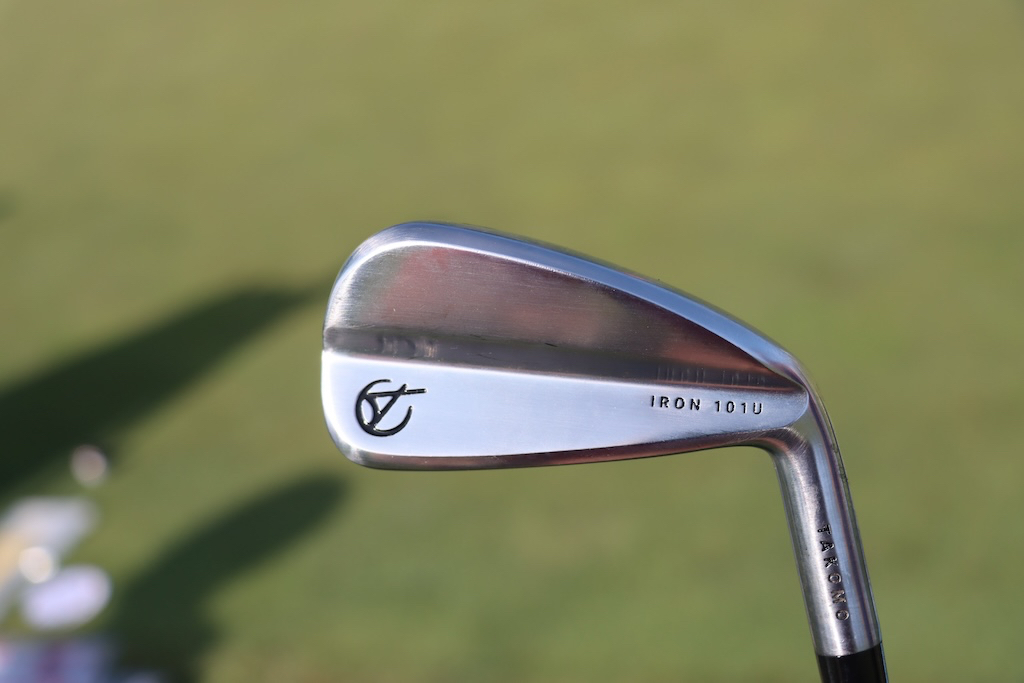
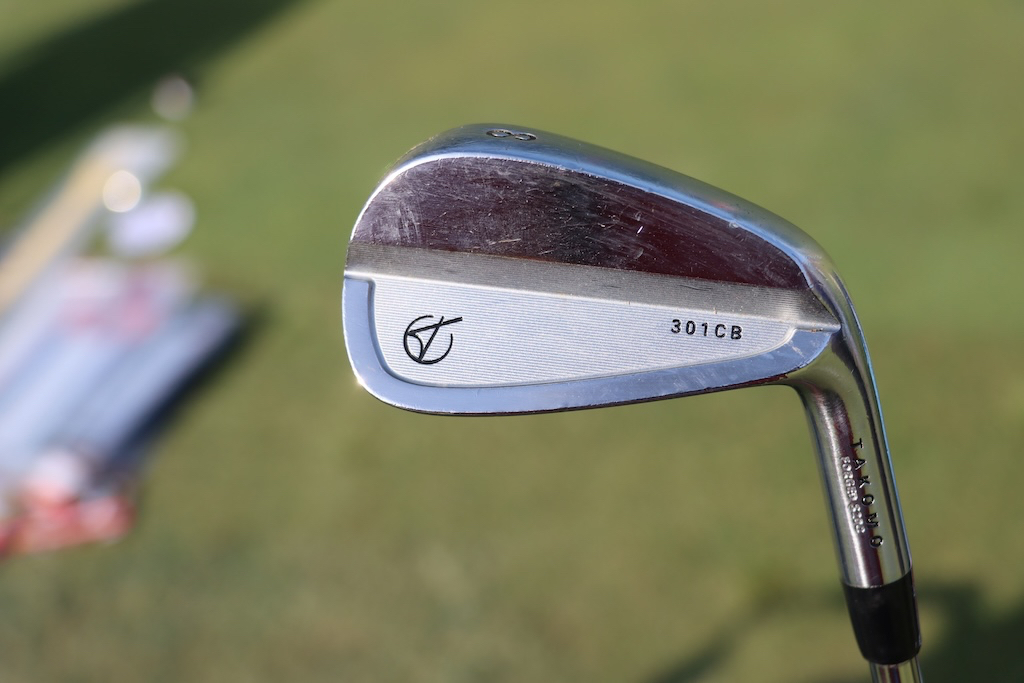
Wedges: Titleist Vokey Design SM10 (46-10F, 52-08F, 56-14F), Titleist Vokey Design WedgeWorks Proto (58-A)
Shafts: True Temper Dynamic Gold Tour Issue S400
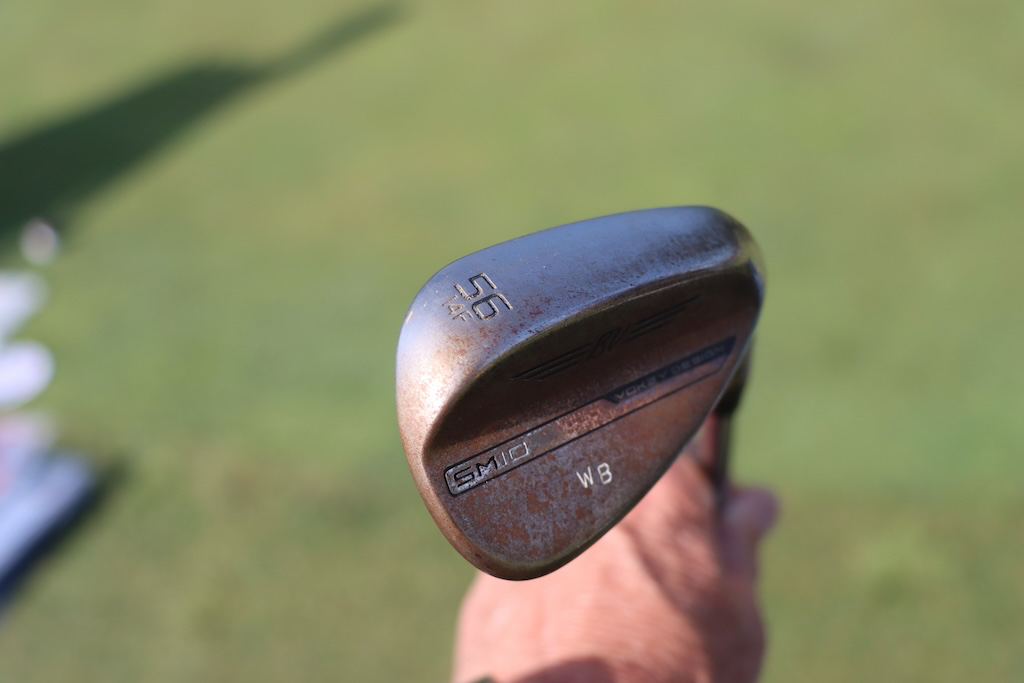
Putter: L.A.B. Golf DF3
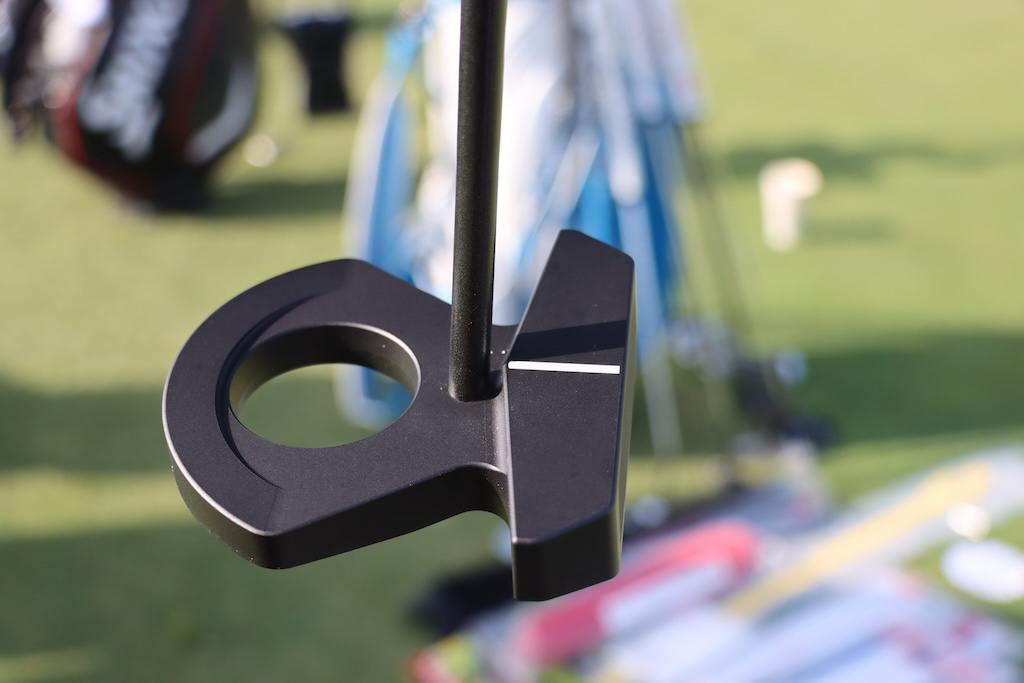
Grips: SuperStroke, Golf Pride Tour Velvet
Ball: Titleist Pro V1x
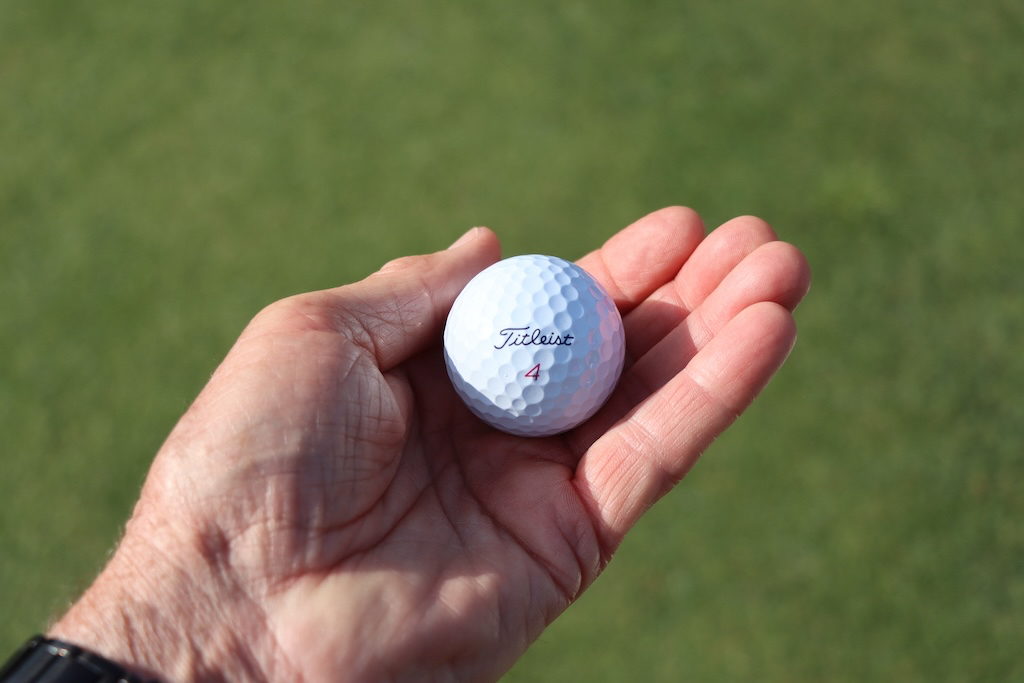
More photos of Wesley Bryan’s WITB in the forums.
- LIKE3
- LEGIT1
- WOW1
- LOL1
- IDHT0
- FLOP0
- OB0
- SHANK0
-

 19th Hole2 weeks ago
19th Hole2 weeks agoJustin Thomas on the equipment choice of Scottie Scheffler that he thinks is ‘weird’
-

 19th Hole2 weeks ago
19th Hole2 weeks ago‘Absolutely crazy’ – Major champ lays into Patrick Cantlay over his decision on final hole of RBC Heritage
-

 19th Hole3 weeks ago
19th Hole3 weeks agoTwo star names reportedly blanked Jon Rahm all week at the Masters
-

 19th Hole2 weeks ago
19th Hole2 weeks agoReport: LIV Golf identifies latest star name they hope to sign to breakaway tour
-

 19th Hole3 weeks ago
19th Hole3 weeks agoNeal Shipley presser ends in awkward fashion after reporter claims Tiger handed him note on 8th fairway
-

 19th Hole2 weeks ago
19th Hole2 weeks agoBrandel Chamblee has ‘no doubt’ who started the McIlroy/LIV rumor and why
-

 Equipment3 weeks ago
Equipment3 weeks agoWhat we know about Bryson DeChambeau’s 3D-printed Avoda irons
-

 19th Hole7 days ago
19th Hole7 days agoLET pro gives detailed financial breakdown of first week on tour…and the net result may shock you






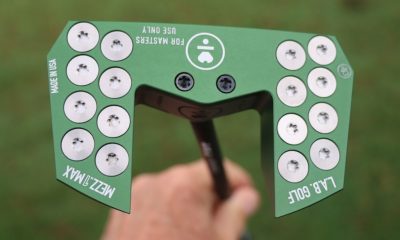





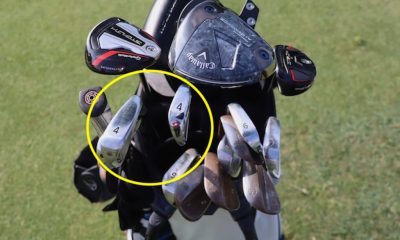

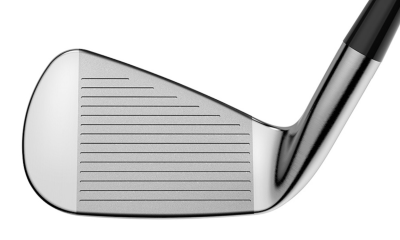












DD
Sep 9, 2020 at 9:44 pm
Does it not behoove you as testers to compare them to the previous generation as well as to the control ball?
Paulo
Sep 9, 2020 at 3:18 pm
Mygolfspy do a scathing test of the Callaway and not far behind that you do a decent positive review. Who do we believe ? I’m confused 🙂
Michael
Sep 9, 2020 at 12:43 pm
I’ve been playing the CS X and the new version flat out works. Its great with the driver but where it really shines for me is from 165 yds to in. This is where I need to shine to score and this ball flat out works for me. I was skeptical with the whole triple track concept but now I can’t imagine not using it. Even off the tee.